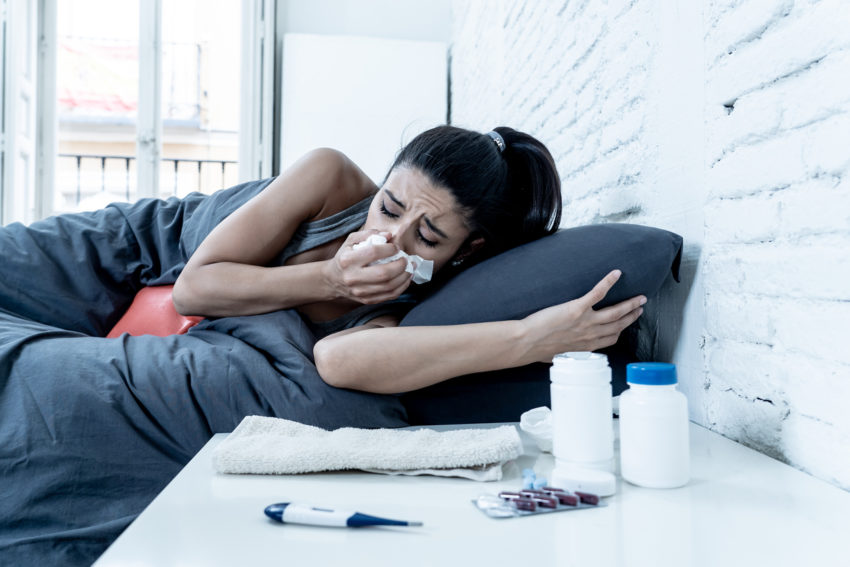
Share On Social!
The term “infectious disease” covers a wide range of harmful illnesses.
Influenza, chickenpox, and COVID-19 are some infectious diseases caused by germs or viruses that sicken people and can spread to others.
Latinos face a heavier burden than their peers for several infectious diseases, from HIV/AIDS to coronavirus to tuberculosis.
Fortunately, we can each do our part to prevent infectious disease — including learning more about them.
“Infectious disease may be an unavoidable fact of life, but there are many strategies available to help us protect ourselves from infection and to treat a disease once it has developed,” according to the National Center for Biotechnology Information.
What is Infectious Disease?
The kinds of organisms that can transmit infectious disease are everywhere.
In fact, there are several ways one can face exposure, including direct contact (person to person, animal to person) and indirect contact (insect bites, food contamination).
When it comes to what specifically can infect people, the Mayo Clinic states that infectious diseases can be caused by:
- Bacteria. These one-cell organisms are responsible for illnesses such as strep throat, urinary tract infections and tuberculosis.
- Viruses. Even smaller than bacteria, viruses cause a multitude of diseases ranging from the common cold to AIDS.
- Fungi. Many skin diseases, such as ringworm and athlete’s foot, are caused by fungi. Other types of fungi can infect your lungs or nervous system.
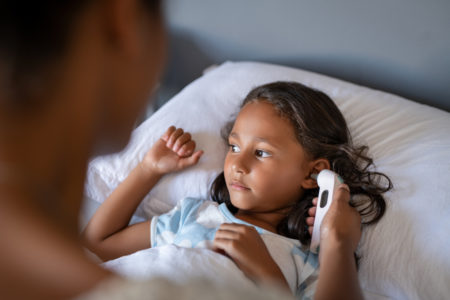
- Parasites. Malaria is caused by a tiny parasite that is transmitted by a mosquito bite. Other parasites may be transmitted to humans from animal feces.
“Infectious diseases are disorders caused by organisms — such as bacteria, viruses, fungi or parasites,” according to the Mayo Clinic. “Many organisms live in and on our bodies. They’re normally harmless or even helpful. But under certain conditions, some organisms may cause disease.”
These organisms can cause diseases with harmful symptoms, such as fever, diarrhea, fatigue, and muscle aches.
“Signs and symptoms vary depending on the organism causing the infection, but often include fever and fatigue,” according to the Mayo Clinic. “Mild infections may respond to rest and home remedies, while some life-threatening infections may need hospitalization.”
What Are the Main Types of Infectious Disease?
There are 22 main kinds of infectious disease, according to the National Foundation for Infectious Diseases:
- Chickenpox
- Coronaviruses
- Diphtheria
- Ebola
- Flu
- Hepatitis
- Hib
- HIV/AIDS
- HPV
- Measles
- Meningococcal
- Mumps
- Norovirus
- Pneumococcal
- Polio
- RSV
- Rotavirus
- Rubella
- Shingles
- Tetanus
- Whooping Cough
- Zika
Anyone can get an infectious disease, but some are more prone than others, health experts say.
“People with a compromised immune system (an immune system that doesn’t work at full strength) have greater risk for certain types of infections,” according to experts at the Cleveland Clinic. “Infectious diseases are extremely common worldwide. Some infectious diseases strike more often than others.”
How Does Infectious Disease Impact Latinos?
Latinos face a significant burden of many infectious diseases, according to CDC data. In many cases, they fare worse than their peers.
Flu (or chickenpox): Latinos have a higher flu-related hospitalization rate (45 per 100,000) than whites (38 per 100,000).
HIV: In 2018, Latinos accounted for 27% of the 37,968 new diagnoses in the United States. Latinos comprise 18.5% of the U.S. population.
HPV: HPV is a viral infection that can cause warts and some cancer types, including cervical. Latinas are 40% more likely to be diagnosed with cervical cancer, and 20% more likely to die from cervical cancer, compared to their white peers, the U.S. Department of Health and Human Services’ Office of Minority Health states.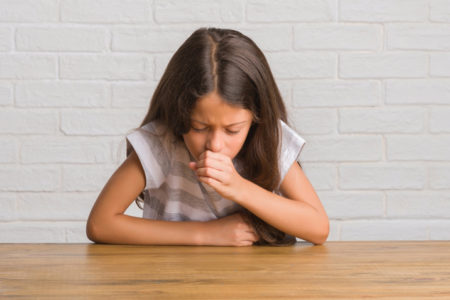
Tuberculosis: TB disease was reported in 2,617 Latinos in the United States. This accounts for 29% of all TB cases nationally. The rate of TB disease in Latinos was over eight times higher than the rate of TB disease in whites.
Chlamydia: In 2018, the rate of reported chlamydia cases among Hispanics was 392.6 cases per 100,000 population, which was 1.9 times the rate among Whites.
Congenital Syphilis: From 2014 to 2018, the rate of reported congenital syphilis increased 263.4% among Latinos.
Moreover, the COVID-19—an infectious disease—continues to wreak havoc on Latinos.
Latinos currently comprise 26.6% of COVID-19 cases in the United States, second only to Whites (51.8%), according to CDC data on health equity and cases on Oct. 12, 2021.
17.7% of U.S. COVID-19 deaths are among Latinos, according to a new CDC data web page, “Health Disparities: Race and Hispanic Origin.” That page was updated Oct. 13, 2021.
However, the Latino COVID-19 death rate became a more out-sized 34.1% when CDC used weighted population distributions. This is higher than the 26.7% mark from data at the end of May 2020.
“The weighted population distributions ensure that the population estimates and percentages of COVID-19 deaths represent comparable geographic areas,” CDC wrote. “[This provides] information about whether certain racial and ethnic subgroups are experiencing a disproportionate burden of COVID-19 mortality.”
What Can You Do to Prevent Infectious Diseases?
The Mayo Clinic offers sage advice that people can take to prevent infection, which are:
- Wash your hands. This is especially important before and after preparing food, before eating, and after using the toilet. And try not to touch your eyes, nose or mouth with your hands, as that’s a common way germs enter the body.
- Get vaccinated. Vaccination can drastically reduce your chances of contracting many diseases. Make sure to keep up to date on your recommended vaccinations, as well as your children’s.
- Stay home when ill. Don’t go to work if you are vomiting, have diarrhea or have a fever. Don’t send your child to school if he or she has these signs, either.
- Prepare food safely. Keep counters and other kitchen surfaces clean when preparing meals. Cook foods to the proper temperature, using a food thermometer to check for doneness. For ground meats, that means at least 160 F (71 C); for poultry, 165 F (74 C); and for most other meats, at least 145 F (63 C).
- Practice safe sex. Always use condoms if you or your partner has a history of sexually transmitted infections or high-risk behavior.
- Don’t share personal items. Use your own toothbrush, comb and razor. Avoid sharing drinking glasses or dining utensils.
- Travel wisely. If you’re traveling out of the country, talk to your doctor about any special vaccinations — such as yellow fever, cholera, hepatitis A or B, or typhoid fever — you may need.
What Can Healthcare Workers Do to Prevent Infectious Diseases?
The CDC has infection control guidelines for healthcare providers.
This includes flu prevention in health settings, preventing healthcare-associated infections, long-term care facilities, and respiratory infections.
CDC also started Project Firstline, an initiative with diverse healthcare and public health partners.
It aims to provide infection control training (engagement tools, mentorship, partner engagement, etc.) for millions of frontline U.S. healthcare workers, as well as members of the public health workforce.
Project Firstline reaches healthcare workers in a variety of healthcare settings, including:
- hospitals
- outpatient clinics
- dialysis centers
- nursing homes
“Project Firstline’s innovative content is designed so that—regardless of a healthcare worker’s previous training or educational background— they can understand and confidently apply the infection control principles and protocols necessary to protect themselves, their facility, their family, and their community from infectious disease threats, such as COVID-19,” the CDC states.
What Can You Do to Prevent COVID-19 Infection?
Structural and social determinants of health, with roots of racism and discrimination, can have an impact on risk for infectious disease.
Take, for example, Latinos during the COVID-19 pandemic.
Latinos are highly exposed to the virus as essential workers. Also, this population suffers from inequities in income, health care access, access to food, and more. Poverty rates also play a large role, as do fears of impact on daily life.
Disparities are happening in vaccine uptake, too.
Initially, Latinos made up a very low percentage of those getting a vaccine, despite being disproportionately hurt by COVID-19.
However, in between July and September 2021, the data shows that more and more Latinos are getting vaccinated, even surpassed the number for Black and white people, according to data from the Kaiser Family Foundation. Still, disparities for Latinos persist in different states.
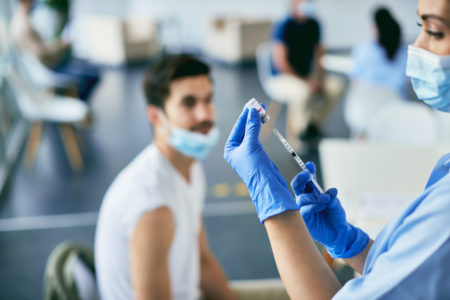 We can all help by sharing accurate information on how to protect one another from COVID-19.
We can all help by sharing accurate information on how to protect one another from COVID-19.
That means vaccination.
Find COVID-19 vaccine locations near you in English or Spanish!
To help move Latinos from vaccine hesitancy to vaccine confidence, Salud America! is uplifting the stories of real Latinos who overcame misinformation, got the vaccine, reconnected with family, and are helping end the pandemic.
Share these “change of heart” heroes in English or Spanish:
- Rosa Herrera read on Facebook that the vaccine would inject her with a microchip. She learned that was a myth. See exactly what changed her heart and pushed her to get the vaccine! (en español)
- Jesus Larralde was nervous about the vaccine’s possible side effects. His wife got the vaccine and was fine. See exactly what changed his heart and pushed him to get the vaccine! (en español)
- Helen Cordova thought the vaccine was rushed. But she did her research and learned the vaccine’s safety, and volunteered to be the first person in California to get the vaccine! See exactly what changed her heart! (en español)
By The Numbers
142
Percent
Expected rise in Latino cancer cases in coming years

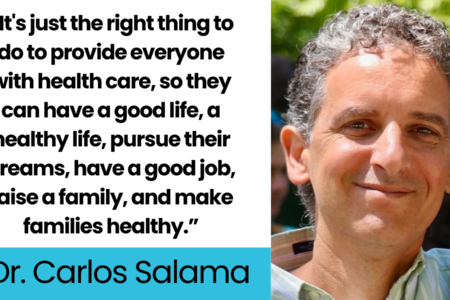

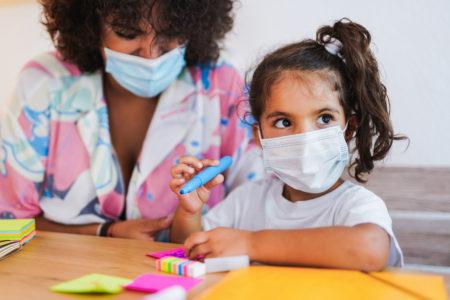
[…] The pandemic is another chapter in the bitter story of American racism and inequality. Black and Latinx people are being infected and are dying at much higher rates than white Americans. Many people of […]
[…] coronavirus has killed over 61,000 Latinos in America according to the CDC, accounting for over 18.2% of the total COVID deaths in the […]
[…] Whereas Hispanics make up 11% of D.C.’s inhabitants, they signify 19% of the COVID cases, and 14% of the deaths. Equally, 46% of D.C.’s residents are Black, they usually make up an alarming 75% […]
[…] and historical mistreatment. According to the U.S. Centers for Disease Control and Prevention, Latino and Black American communities are three times more likely to become infected with […]
[…] Covid pandemic has hit the Latino community particularly hard, and data from the nonprofit health equity advocacy group Salud America! shows Latinos lead in the 0-24 age […]
[…] the pandemic, Latinos took major blows, both in terms of COVID-19 cases and also from the economic recession under former President Donald Trump. Nearly half (49%) of […]
[…] the positive trend, the harm may have already been done. The pandemic has disproportionately impacted Latino communities. Reuters reported that election-related or political disinformation that […]
[…] pesar de la tendencia positiva, es posible que el daño ya esté hecho. La pandemia ha impactado desproporcionadamente Comunidades latinas. Reuters informó que la desinformación política o relacionada con las […]
[…] residentes blancos muestran una tasa mucho más baja con 10 muertes por cada 100,000 habitantes(8 9) . Los afroestadounidenses por su parte, denuncian subsistemas de salud que les segregan […]
[…] https://salud-america.org/coronavirus-case-rates-and-death-rates-for-latinos-in-the-united-states/ […]
[…] https://salud-america.org/coronavirus-case-rates-and-death-rates-for-latinos-in-the-united-states/ […]
[…] communities have the second-highest number of COVID-19 cases in the U.S. They’re also more likely to become hospitalized and die from the disease than other […]
[…] total, around 160,000 Latinos were killed by COVID-19. This accounts for 16% of the 1 million deaths in the country. The […]